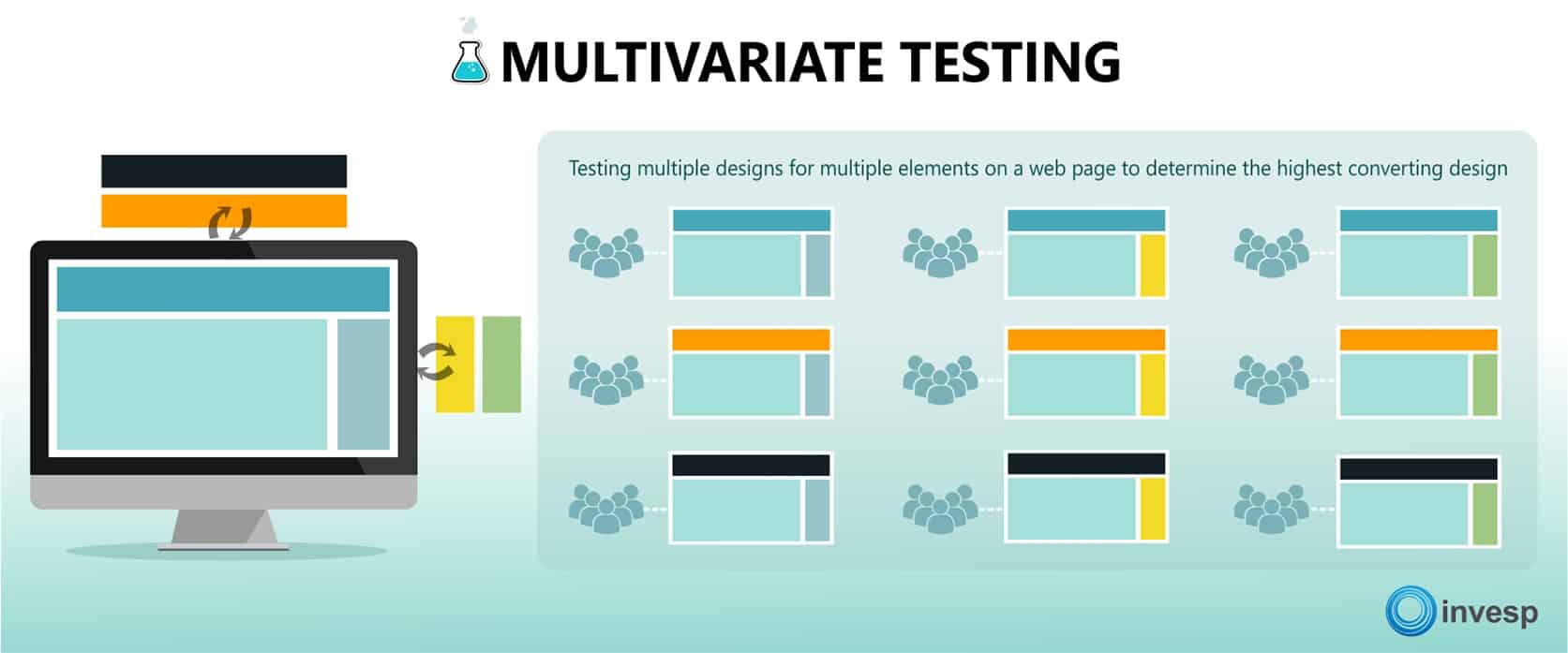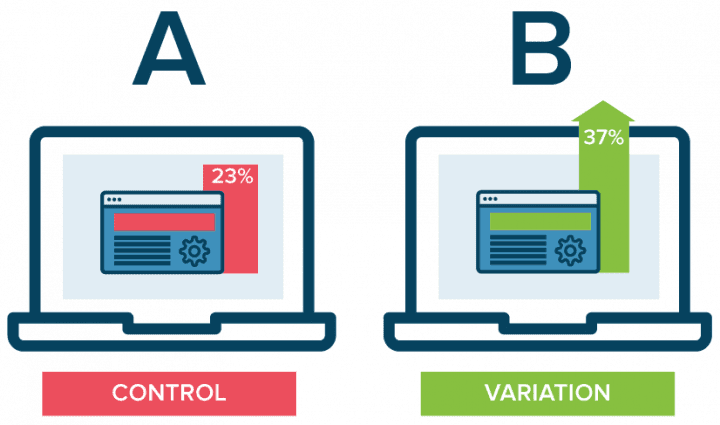What is Multivariate Testing?
Multivariate testing is a useful technique for testing a marketing hypothesis where multiple variables are modified to gather insights on website changes.
The main goal of multivariate testing it to learn which combination of variables performs the best out of all possible combinations.
In digital marketing, this best combination relies on what the intended result of the multivariate test. Most of the time, these kinds of experiments are done to increase lead generation and conversions, increase conversion rate, lower bounce rate, and more.
Whatever combination results in the highest number of conversions or lower bounce rate would be declared the “winner” for that experiment.

The Multiple Variables of Multivariate Testing
Multivariate testing tests, you guessed it, a lot of variables; therefore, there are many variations of the same webpage in the experiment.
There are a lot of elements of a webpage that can be changed or modified. Text, pictures, headlines, call to action (CTA) buttons, forms, and even page layout are just some of the elements that can be tweaked during a multivariate test.
For example, if your webpage contains a picture and a headline, and you want to make three variations of the image and two variations of the headline, you have to create at six variations of this page.
Once you have created at six versions of the webpage, they are tested concurrently with a live audience (users visiting your website) to find which variation is the most eye-catching and induces the most engagement.
If the number of variations feels a little confusing, keep this equation in mind:

What is the Difference Between Multivariate Testing and A/B Testing?
A/B Testing
In digital marketing, there is another kind of testing: A/B testing, or split testing. In A/B testing, there is no more than one variation to test when optimizing the content on your website.
The metric of interest (i.e: conversion rate, bounce rate, etc.) is referenced across the original and the variation for a large sample of users. In this method, site visitors are shown either one version or the other. The users’ interaction with the variation and the original determine which version provides the better result.
Some elements that are tracked include what videos visitors watch, what buttons they click, whether or not they sign up for a newsletter or fill out a subscription form, and others.

A/B testing is highly useful, but it does come with some limitations.
The limitations are clear: A/B testing only allows for one variation to be tested against the original. With certain applications, such as Google Optimize, up to three variations can be tested; however, the more variations that are tested, the more dilute the probability of finding a clear winner in the experiment.
For those who want to be a bit more thorough in their tests, multivariate testing is the best option.
Multivariate Testing
Multivariate testing differs from A/B testing in one key way: you can measure more variations of a single webpage across multiple variables and still generate accurate results.
The idea is essentially the same, but the higher number of variables reveals much more information over time. Instead of getting two ideas of how a webpage works, you are privy to how the changed variables interact with one another, how users react to a number of changes, and how these changes positively or negatively impact those user interactions with your website.
Multivariate testing is often viewed as more advantageous than split testing because it offers a large amount of data and provides higher quality insights in return.
You can easily identify what areas need to be redesigned for the most impact with site visitors, which can increase online business considerably. This data is especially helpful when designing new and future pages: landing pages, blogs, social media posts, and more.

What are the Benefits of Multivariate Testing?
Multivariate testing can benefit a number of ways. When run correctly, multivariate testing can generate high quantities of data that can give you insights across a number of variables. These insights can be carried across other webpages that you are looking to test on, and will eliminate the need to run tests on multiple pages.
Further, multivariate testing can eliminate the need to run sequential A/B tests on the same page with the same goal. With a greater number of variations, you can cover all of your bases and get the best results in a shorter period of time.
The largest downside to multivariate testing, however, is that it takes longer to drive enough traffic to the webpage to generate insights. With more versions of a webpage, it can take some time to have enough traffic to view each variation organically. However, this can be remedied by proper promotion and advertising campaigns.
How Can I Benefit from Multivariate Testing?
Multivariate testing can impact your search marketing efforts greatly when properly utilized. Directive’s conversion rate optimization services team dedicates itself to testing to maximize your website’s ability to generate leads and close deals.
Your website is the gateway to your business, and you deserve the best team of CRO experts to ensure that your business is executing effectively. Get a free proposal today to learn how your website can work more efficiently!